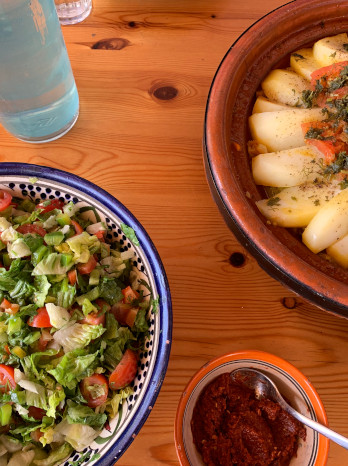Morocco
READ MOREMorocco is a mountainous country in western North Africa that lies directly across the Strait of Gibraltar from Spain. Morocco (the full Arabic name is Al Mamlakah al Maghribiyah which translates into “The Western Kingdom”) is the third most populous Arab country. Morocco shares the largest part of its border with Algeria to the East and Western Saharah to the South. Morocco is known for being one of the most tolerant of the Arab nations. The country is relatively safe, peaceful, and stable.They have influences from Arabs, Berbers, Jews and legacies from Portuguese, French, Spanish.
Other
Information
CURRENCY
The national currency is the Moroccan Dirham (1 USD = 10 Dirhams).
LANGUAGE AND POPULATION
Modern Standard Arabic and Amazigh (Berber) are the two official languages of Morocco. Between 60% and 80% of Morocco’s population is Berber speakers. French is the country’s primary language of economics and is used in government and schools as well. Nearly 5 million of Morocco’s population use Spanish particularly those residing in the northern region of the country. English is also gaining popularity after it was promoted by the national educational reforms that started in 2002.
Government
Morocco is a parliamentary constitutional monarchy and the government of the country is led by the Prime Minister of Morocco.
Religion
Islam is the official religion of Morocco. The cities of Morocco also have churches and synagogues where, Catholic, Protestant and Jewish residents practice their religions peacefully.
SIZE
446,550 km² in area with a population estimated in 2019 at 36,471,769 people according to UN data.
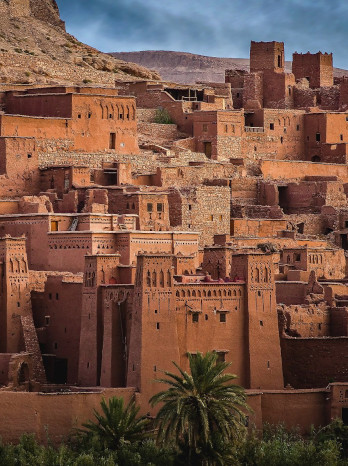
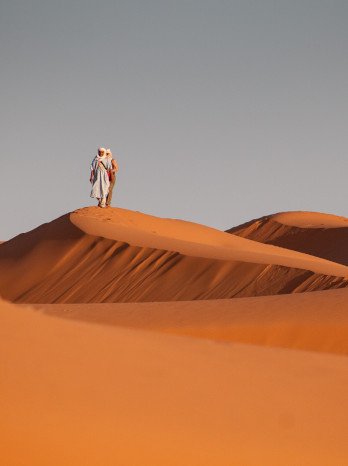
Highlights
01 Moroccan Medinas & Souk Markets
02 The Sahara Desert
03 Delicious Cuisine
04 Amazing Beaches
05 Mountains
Top 5 Destinations
01 Marrakech, Fez & Casablanca
02 Atlas Mountains
03 Chefchaouen
04 Dakhla
05 Taghazhout
Unique Experience
• Try the public Hammam Bath. This is a steam room where people go to clean themselves and you can hire a lady to scrub you for a very cheap price. Make sure to bring your own mat, scrub, and toiletries.
• Take time for tea, Moroccans love it. The most typical type is green tea brewed with fresh mint and plenty of sugar. Another type is called Berber tea with wild thyme, mint, lemongrass, geranium, sage, verbena, and other seasonal ingredients.
• Camping and camel ride in the desert where you’ll find yourself at peace in the middle of the desert as you wait for the sunset.
• Go to the beach. Relax, and buy a tea and donut from sellers walking around the area. You can bring your tent too as locals do.
• If you’re up for adventure and have plenty of time, cross to Western Sahara and explore Dakhla, which you can do by flight, car, or a long bus ride. Western Sahara is a disputed territory currently administered by Morocco so if you can get in to Morocco, you can get here too. It’s an interesting city and has lots of things to offer if you book a day tour to see the city in and around.
Local Cuisines
Tagine
This is at cone-shaped cooking vessel traditionally used in Morocco made of either ceramic or unglazed clay. Most tagine recipes referred to as tagines layer aromatics, meat, and vegetables, along with spices, oil, and water
Pastillas
A pastry stuffed with pigeon and almonds and flavored with a variety of spices including saffron and cinnamon, often served during wedding and special occasions. You can also get a seafood version stuffed with shrimp, calamari, fish, and vermicelli noodles.
Khobz Bread
Moroccans can’t probably go a day without Khobz, a type of round leavened Middle Eastern flatbread. This is eaten for breakfast, lunch, and dinner and often consumed with meals like tagines and tanjias. They make sandwiches from them too.
Couscous
A dish of steamed crushed durum wheat semolina served under meat or a vegetable stew. Make sure to try this on a Friday for lunch when it is often served.
Type of Travel
Guided Tours
While the rest is DIY, you can hire a tour company for specific tours. For example, you can arrive in Marrakech, go to your booked accommodation, and when it fits your plan, just research for a Sahara Desert tour operator through your hotel or by walking around the city center. You can compare prices on the spot and have a better idea of what you can expect. You can also plan this ahead of time if you wish as there are several operators you can find online.
Renting a car
You can hire a car if you want to explore on your own and have better flexibility. There are plenty of car hires and it’s safe and easy to drive around.
Road and Bus Travel
DIY is certainly easy and doable. There are well-connected buses, trains, taxis, and local flights for wherever you want to go and they’re easily a research away.
Budget Travelling
Budget traveling can be easily done as hostels, buses and street food are very affordable and are found everywhere.
Least Favorite
• Scammers and persistent sellers in touristy areas such as Casablanca and Marrakech.
• Quality of standard hotels and hostels are usually below average.
• Internet connection is generally slow and often not sufficient for remote working, you’d have to find those few reliable co-working spaces.
• Most critical up-to-date information online for buses, routes, etc… are in French. You’d have to personally visit to buy tickets or get the information you need.
Planning Your Trip
Time allocation and itinerary suggestion
• Morocco is a huge country and most travelers pick a city or two to visit for a duration of 1 week to 2 weeks on average.
• If you want to see as much as you can, you can start in Fes then to Rabat, Casablanca and then end in Marrakesh depending on how much time you have, spending 2-3 days in each city.
• An alternative route if you want to hit the coast is to start in Agadir, hang out at the laidback city of Taghazout, visit Essaouira and end in Marrakech where your flight out is likely going to be.
• If your base is in Marrakech, hiring a car might be a great idea and explore the surrounding non-touristy destinations.
Getting Here
Casablanca, Marrakech, and Agadir are common entry points to Morocco by flight. Morocco being a common African destination is well connected with reasonable flight costs. From south of Spain, you can also easily get a ferry ride to Nador, north of Morocco and take the train from there to your destination. Other sea options are available from France and Italy.
FROM UK
FROM US
FROM EUROPE
FROM ASIA
Safety & Security
Morocco is a safe place to visit with the exception of small crimes here and there (scams and pickpockets) as it is in most touristy places. Destinations like Fez, Casabalanca, Marrakesh having more tourists tend to be the center of scammers as well so you have to be extra vigilant when traveling solo and especially if you’re a solo female traveler as unfortunately, there’s a high chance you’ll get harassed. Dress conservatively and avoid being on your own at night. Buddy up if that option is available to you, avoid eye contact, and just give a brief smile as you wave sellers off and politely walk away.
If you visit other laidback cities such as near the coast in Essaouira and Taghazout, you will find the atmosphere to be more relaxed and you can get by without worrying a stranger following you or persistently trying to sell you something.
Getting Around
Morocco’s train network is operated by ONCF, and is one of the best in Africa. Prices are cheap, and the trains are quite efficient. You may have to book onsite though as the website is either not user-friendly or only available in french. First class is often worth it especially when traveling during peak hrs.
The two largest bus companies in Morocco are the national carriers, Supratours and CTM. You can easily get tickets on the day itself or the day before. Most buses are comfortable with proper air-conditioning.
There are 2 forms of public transport: grand taxis, which is shared and price is often fixed and there’s petit taxis, which is the usual private taxi. Make sure that the meter is working before you accept a ride, or negotiate your fare in advance. There are city buses too though it can get crowded. You can ask your accommodation for assistance on certain routes.

“We decided to skip Casabalanca and Marrakesh. In doing so… we met the genuine Morocco instead in its raw and fine beauty… in culture and its people.”
Related Articles
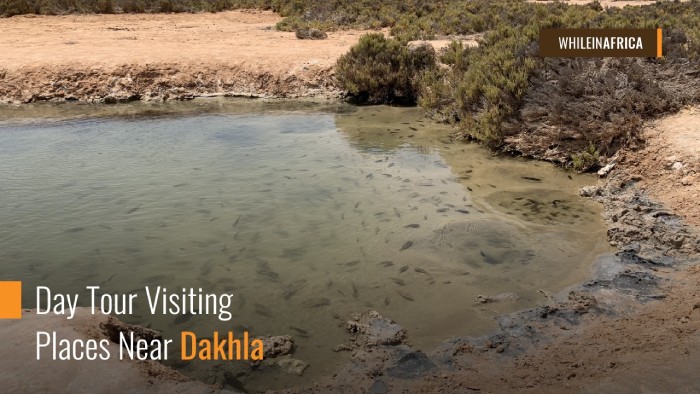
Day Tour Visiting Places Near Dakhla
The city of Dakhla is in Western Sahara* located along a 50km peninsula bordering the Atlantic Coast. The geography here is as unique as they come with one side hosting a flat-water lagoon, while the other boasts some first-class wave action ideal for surfing. And...
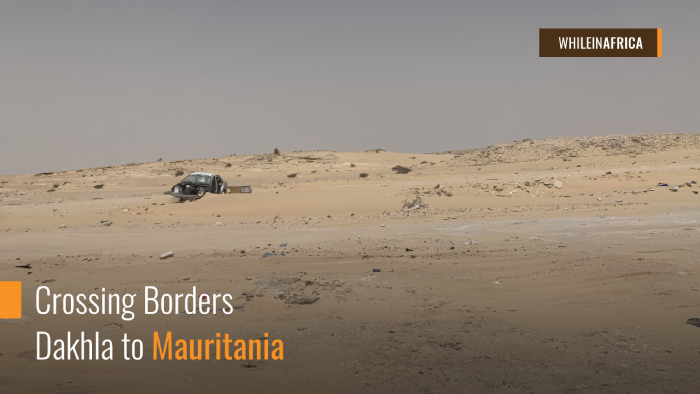
Crossing Borders Dakhla to Mauritania
I thought crossing the border from Dakhla in Morocco to Mauritania was going to be really challenging and "unsafe" based on others' reaction upon telling them our plans. I imagined some militiamen with guns walking out and about where we need to keep our heads down as...
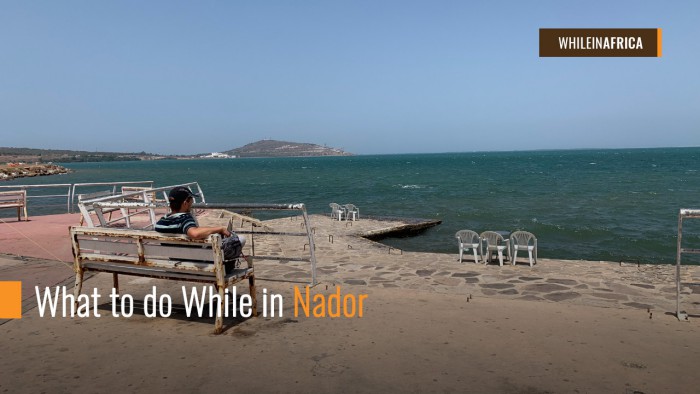
What to do While in Nador
Nador is one the northeastern coast of Morocco, and reachable via an 8-hour ferry from Spain to Morroco. Nador was founded in the 19th century and was under Spanish rule until Morocco’s independence in 1956. Next to this city is the Spanish enclave, Melilla. It's...
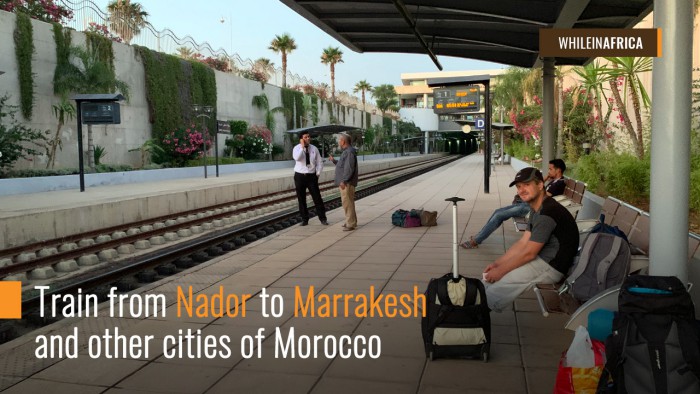
Train from Nador to Marrakesh and other cities of Morocco
Nador to Marrakesh Travel time: 12 hrs by train. You change trains in Fes Cost: 35 euros per person for 1st class Limited food options so bring your own From Nador, there are routes to Fes, Casablanca, Marrakesh and everywhere else though not all direct, everything is...
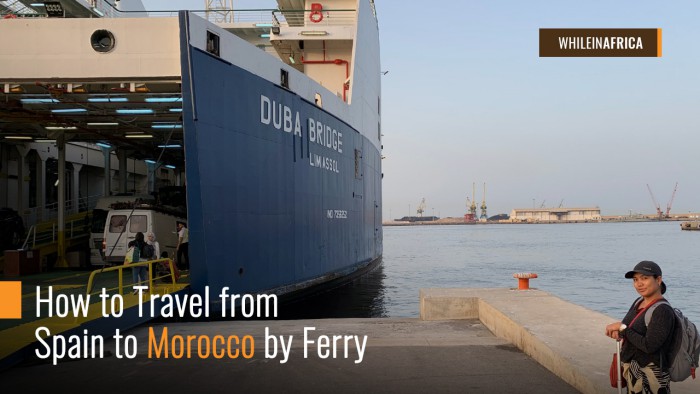
How to Travel from Spain to Morocco by Ferry
QUICK SUMMARY: Cost per person one way for a seat: About 51€ Cost for a cabin per person: About 70€ Travel Time: Between 5 to 10 hrs (depending on vessel and time) Ferry Companies: Several options. We used Balearia Immigration Process: There's an immigration officer...

